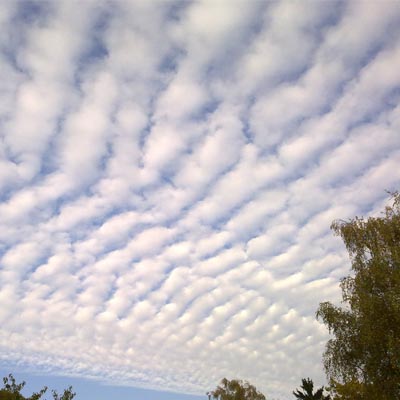The Undulatus effect forms due to wind shear that occurs in the stable layer of the atmosphere. The disturbance in the atmospheric layer can be due to the sudden change in wind speed and direction caused by the approach of a frontal weather system or by simple atmospheric convection (uplift of warm air due to surface heating) mountain tops. The disturbance of the cloud layer causes the waves of air to move like waves on a pond. As the winds blow at different speeds through the cloud layer, the clouds pile up into curved ridges, bind together, and split into waves.

Undulatus Clouds
There are many potential explanations for sightings. We recommend eliminating the most common and mundane before jumping to less probable conclusions or you submit a report.
Resources
Object Trackers
Live flight tracking maps are available for monitoring airline traffic and trajectories in real-time or historically around the world.
FlightAware
Flightradar24
ADS-B Exchange
Marine Traffic
Space Launches
Planned launches occur regularly all over the globe. These tracks can help identify the potential missions or launches in your area.
SpaceLaunchSchedule.com
SpaceFlightNow.com
RocketLaunch.Live
Satellite Trackers
Satellite tracking can also be done in real-time with the aid of tracking maps. They are also helpful for tracking Starlink launches.
Heavens Above
Space Weather
There are a number of sites which track solar flares, magnetic storms, and other events which are helpful for eliminating explanations related to astronomic phenomena.





